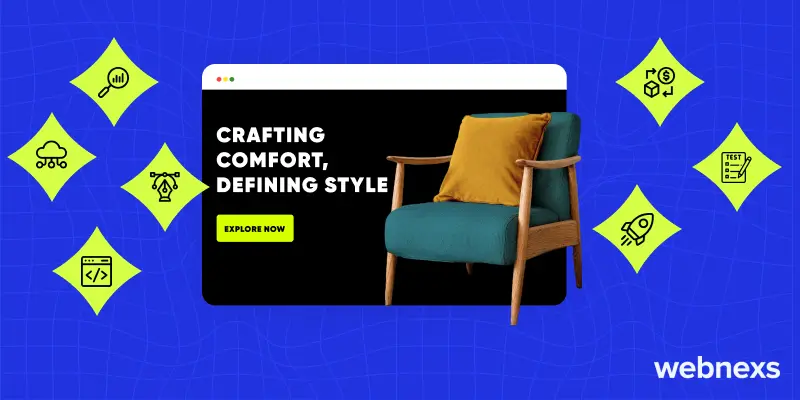Ecommerce is now accounting for nearly 15% of global sales, and that number is growing steadily.
Now building a high-performing online store is more important than ever.
But launching a simple e-commerce website isn’t enough.
You need a well-developed eCommerce site that’s designed to drive sales, streamline the shopping experience, and stand out in a crowded digital marketplace.
In this guide to ecommerce website development, we will walk you through the key steps to build an ecommerce site.
From initial research to post-launch activities. We will also help you choose the right platform and implement critical features that enhance functionality, speed, and user experience.
No matter if you’re building a brand-new store or updating your current one, these actionable strategies will turn your site into a revenue-driving machine.
Key Takeaways on Ecommerce Development
- Planning is important for ecommerce development. It helps understand the market, choose the right platform, and to align with your business goals for long-term success.
- Picking the right ecommerce platform is key for online store development. It should be easy to grow, customize, and work well with business needs.
- A good user experience with simple design, mobile-friendliness, and fast loading makes customers happy and increases sales.
- Add important features in your ecommerce development like safe payments, stock management, and customer support to make shopping easy and help the business run smoothly.
- With advanced e-commerce development, regular checks, updates, and improvements made easy to keep the online store safe, fast, and ready for future change.
Get Started with Webnexs Ecommerce Development Now
What is Ecommerce Web Development?
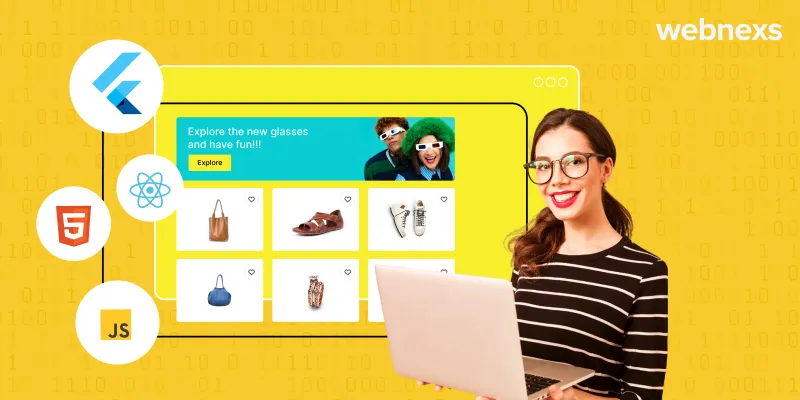
Ecommerce web development is creating an online store or mobile app that allows businesses to sell products or services to customers over the internet.
The ecommerce development process consists of a website or application design and the building of systems that handle payments, manage products and connect with other business tools.
What Are the Steps in the Ecommerce Website Development Process?
- Research and Planning
- Hosting and Platform Selection
- Designing and Layout
- Development Stage
- Payment Gateway and Shipping Integration
- Testing and Deployment
- Launching and Post-Launch Activities
Comprehensive guide on 7 key steps of ecommerce development is explained here below:
1. Research and Planning

The key aspect of creating an ecommerce website is having clear communication between the e-commerce development company and the client.
It is more important for the developers and designers to have a clear understanding of the company and the product the client is manufacturing.
Identify your target audience and the keywords they might use to find your product or company in the search engine. This knowledge helps connect with your customers.
Every business needs a proper business plan to succeed. Planning is crucial.
You must define all the requirements for the ecommerce development of your new online store and its participants. Consider the requirements of your website.
To enhance user experience, product content, search results, and landing page effectiveness, you can use Google Analytics.
By analyzing customer behavior on your website, you can gain insights into how they find your online store, which pages they visit, and how long they stay on them. This knowledge will help you optimize your store for better performance.
Why is it important?
88% of online shoppers wouldn’t return to a website after a defective experience.
Each phase of ecommerce website development is important to its long-term operation and the engagement and success of your online store.
Clear communication, proper planning, a well-thought-out design, and the right migration/launch will form the backbone of your site.
The site needs to meet the expectations of both clients and the business. Any fall in these areas can lead to a poor user experience, reduced conversions, and missed business opportunities.
The contribution of each phase adds to the usability, efficiency, and marketability of the store, determining its success and profitability.
Warby Parker: Innovating Through Virtual Try-Ons
Warby Parker innovatively merged the world of technology and ecommerce to practically revolutionize the industry for eyewear. The innovative virtual try-on application that allowed users to visualize glasses on their faces before purchasing essentially paved the way for these leaders in online eyewear retail.
Read More: Why startups are losing its efficiency?
2. Hosting and Platform Selection
i) Hosting Selection
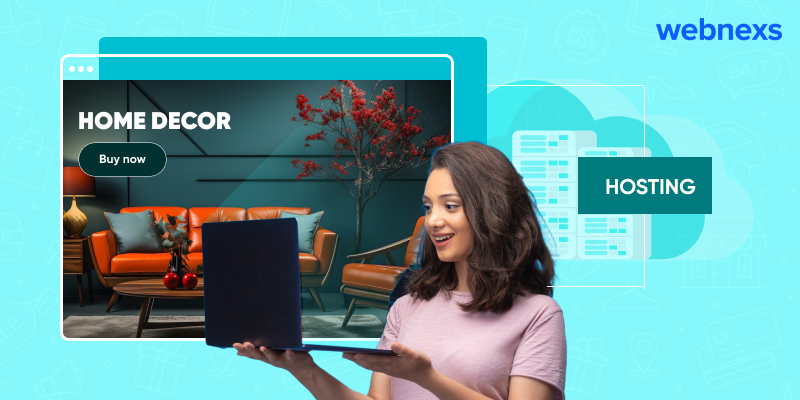
Hosting means renting space on a web server to store the data of a website. Without it, nobody can access your site.
Your host will provide round-the-clock site access, file storage, and bandwidth management for seamless performance.
When choosing a hosting server, consider that the price of the package will differ depending on the size of the package, storage space, bandwidth, and any other added services, such as security or backup features, which will differ based on the hosting plan.
A reliable host ensures faster load times, reduced downtime, and security for your ecommerce site.
You can design and develop your website, but without hosting, it goes live for nobody to access. Concerning ecommerce development, the right hosting solution guarantees site speed, reliability, and scalability.
If planning for an ecommerce scale-up, it’s best to ensure that the hosting supports seamless expansion with no performance lag.
Factors to Consider When Choosing a Hosting Server for Ecommerce Development
1. The Number of Websites You Can Host
Ensure that your hosting solution allows multiple websites to be hosted, should you need to expand.
2. Total Storage Space and Bandwidth
Select a hosting plan that provides sufficient storage space for your website content and can accommodate the anticipated traffic.
3. Email Accounts
Determine how many email accounts come with the hosting package and how easily additional accounts can be added, if needed.
4. Database Support
Confirm that your hosting provider offers enough SQL databases for your ecommerce store’s needs, which is essential for managing product data, customer information, and orders.
5. Security and Performance
Choose a hosting server that provides strong data encryption and high performance. So that you can easily provide quick load times and protect sensitive customer information.
6. Technical Support
Reliable technical support is a must to resolve any hosting-related issues promptly.
ii) Platform Selection

To make your online store successful, it’s important to choose the right ecommerce platform. This platform is the base of your store and affects how your website works, looks, and grows as your business expands.
Although you can design your website on your own, the platform you choose determines what tools, features, and customization options are available.
It should work well with your hosting solution and allow your business to grow without any technical problems.
Different platforms are designed for different needs, from easy-to-use options to ones that allow advanced custom development, all of which can affect your store’s success.
When picking a platform, think about how it aligns with your business goals and plans.
A good platform should allow you to add third-party tools, apps, or services, which will be helpful as your business changes and grows.
For example,
Headless commerce is an advanced type of ecommerce platform. The front end (what customers see) and the back end (where you manage the store) are usually connected.
However, with headless commerce, these two parts are separated. This means you can change the shopping experience on different platforms, like websites, mobile apps, or even in-store screens.
Use a headless platform to create a specialized shopping experience for your website and a different one for your mobile app, without colliding with each other. This gives you more freedom to create a personalized experience for your customers, which will help your business grow.
Factors to Consider When Choosing an Ecommerce Platform for E-commerce Development
1. Platform Features and Flexibility
The platform should have all the features that your business wants. It can include anything like advanced customization, user-friendly UI, and integration capabilities with third-party tools or apps.
2. Security
SSL encryption, secure payment options, and data protection are essential to keep your user’s personal information safe. When it comes to security, these features are mandatory.
3. Performance
Your platform should be fast and have minimal downtime to provide a great shopping experience for your customers.
4. Scalability
As your business grows, so should your platform. It should scale up to handle an increasing audience and more products without issues.
5. Technical Support
Choose a platform that provides good customer support in case you run into problems during the setup, maintenance, or growth of your store.
6. Ease of Use
The platform should be easy to use, especially when managing your store, so you can update products, handle orders, and track sales without needing many technical skills.
Read More: Ecommerce Solution for Small Business for their startup journey
3. Designing and Layout
To design an Ecommerce website, you need to go through three processes: Wire Framing, Live Designing, and Usability.
i) Wireframing
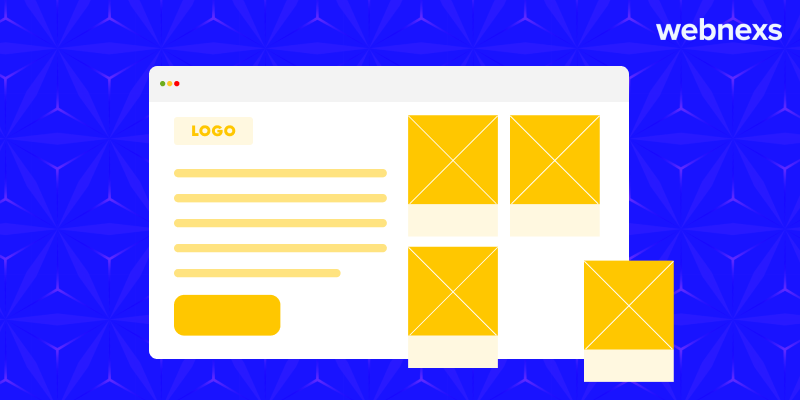
A wireframe is a visual representation of a user interface. It is done by UX Designers to define the hierarchy of things on a screen and communicate what the products on that page should be based on user needs.
It is the correct way to design a website service at the structural level. Designers can create wireframes by hand-drawing them or by using software like Microsoft Visio to create them on-screen.
We use wireframes in the early ecommerce development stage to establish the basic structure of a page, manage inventory, and address security concerns before adding visual design and content, which are crucial during the ecommerce website development.
Create the wireframe in the early stages of the project to obtain approval from users and clients on key web page layouts and navigation. This helps build confidence for the developers to move forward.
At the same time, customers may find it difficult to understand the wireframes, as they do not include any design or technical details.
Developers must convert the wireframes into a design to make it easier for customers to grasp the concept.
When adding material, it may initially be too much to fit into the wireframe layout. The designer and copywriter will need to work closely together to make it fit properly.
Why is it important?
68% of organizations using wireframing in the early stages of development appreciate fewer design changes in the later stages of the project.
Wireframing is a basic step in ecommerce development process. The wireframe identifies the structure and layout of the website without getting into the design details.
A wireframe gives clear indications of the website’s navigation, content hierarchy, and user flow, making it easier to develop a usable and intuitive ecommerce site.
By visualizing a basic structure early on, errors can be avoided later in the process, and the final design can be tailored to suit the project’s aims and the needs of users, avoiding huge expenses.
Allbirds: Success through Sustainability and Transparency
The sustainable sneaker brand Allbirds used a branding strategy called storytelling and transparency. An ecommerce site equipped with simple navigation and a priority on predicting, developing, and sustaining would open doors for the sustainable design brand. A clean website look-and-feel, along with easy functionality, would speak to consumers, gaining brand loyalty in the process.
ii) Live Designing
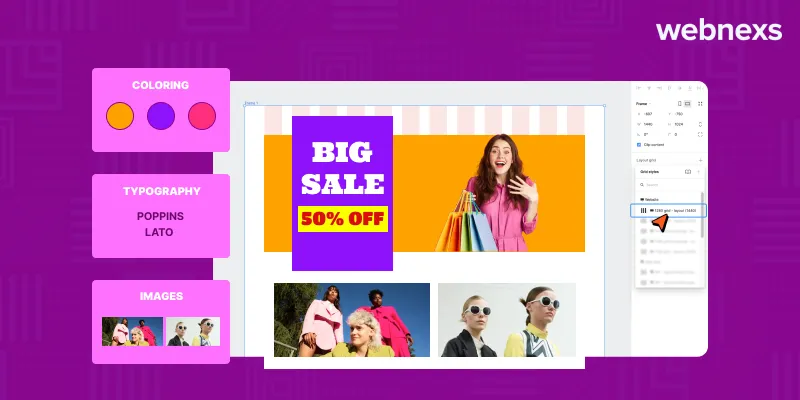
After obtaining approval from the client for the wireframe, the subsequent step involves live designing, which is about implementing the ideas discussed in the wireframe.
The purpose of live designing is to create a website that can be launched.
We will make changes according to the client’s choice to redesign the ecommerce website development process. We will also add or remove features to ensure the perfect end product.
Why is it important?
70% of consumers think of a company as more trustworthy depending on the site’s design.
With the approval of wireframes, the next step will be to turn the live design into the proper structure of a website, transforming it into a fully functional online store.
This stage sees the coloring, typography, imaging, and interactive recreation of the wireframes.
This service will make the design align with the brand and enhance UX for the user.
The live design process will ensure that all observations from the client during the wireframe stage are duly reflected in the finalized version of the site, thus creating a website that meets its functional business and user expectations.
Read More: 8 step guide to build your Ecommerce store to success
iii) Usability
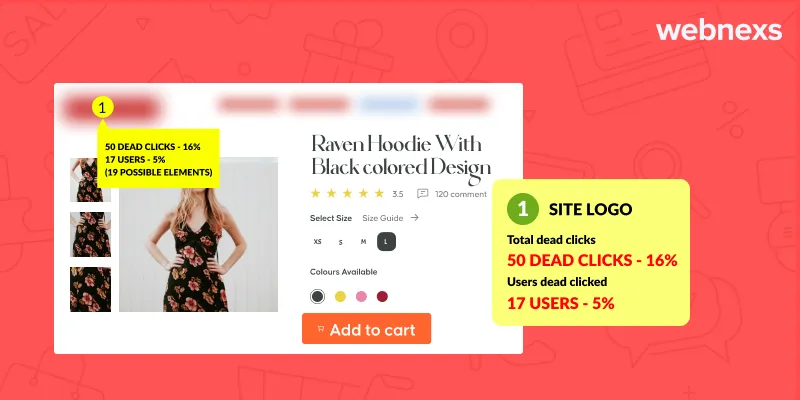
The user experience is the main focus of usability. Making a product usable is just one aspect of designing for the user experience.
Usability enables people to achieve their objectives easily. We will create the website to ensure that customers can access everything comfortably.
“A good design is pleasurable, thoughtfully crafted, makes you happy, and gets you immersed”
Why is it important?
Improving web usability can make conversion rates rise to 200%.
Usability is core to providing a smooth experience for the user, which is very important for any ecommerce site.
A usable site means that visitors can navigate easily, and find and purchase items with relative ease.
High levels of usability prevent frustration, high bounce rates, and abandoned carts.
When you put your attention on usability, you ensure customer satisfaction, retention, and conversions. In other words, a user-friendly site should mean that visitors reach their goals quickly and effortlessly, determining success for the store.
Glossier: Simplifying Beauty with the Customer in Mind
Glossier is a beauty and skincare company that began its journey as a humble blog and transitioned into an ecommerce force. The beauty brand managed to create a seamless shopping experience for its audience through a great user interface and active feedback from customers. Their cool visuals, simple navigation, and personalized recommendations led to a loyal base of customers and exponential revenue growth.
Get Started with Webnexs Ecommerce Web Design and Development Now
4. Development Stage

Here different designs are put together to create a working online store. During this stage of ecommerce development, the developers take designs and ideas formulated during the design integration phase to create the actual website with the intention that it will work for both businesses and users as planned before.
The development stage is the actual building of the various features and functionalities that will drive the online store.
This includes the code, the tools and software integration, the product page upload, and the smooth operation of the site on mobile platforms and devices.
Why is it important?
72% of consumers will only engage with personalized messaging.
Optimizing the efficiency of the shop, securing safe payment options, establishing security protocols for encrypted payment processing, and managing orders from a database are critical tasks undertaken at this stage, highlighting their significance.
It includes configuring the backend and frontend systems of a shop for the highest output and efficiency.
The development refers to how this will effectively reflect the business goals of the client, followed by the ultimate satisfaction needs of end users.
Good development means that it would load quickly, with intuitive navigation, and all this is very important.
Integrating the backend systems like payment gateway, security protocols, and inventory management ensures that the ecommerce shop operates smoothly after going live.
This phase adds how the website starts to reflect both the client’s business goals and the end-user’s needs.
Gymshark: Scaling Through Seamless UX and Global Reach
Gymshark, an activewear brand, commenced with a simple Shopify ecommerce store. The founders focused on a clean design, fast loading, and mobile-friendliness for their fitness-sensitive audience. Through constant innovation and an ability to offer global shipping, GymShark scaled up to a multi-million dollar enterprise, proving an excellent case study in building an ecommerce business.
Popular Programming Languages Used in the Ecommerce Website Development Process
In the ecommerce development stage, developers use a variety of programming languages to create the features and designs of an ecommerce website. Some of the commonly used languages are:
- HTML
- CSS
- JavaScript
- PHP
- Python
- Ruby on Rails
- SQL
- Node.js
Each of them has its purpose in building a website. The one that works best is dependent on what your project needs and the goals of your business. Contact our experts to choose the languages that suit your requirements and the features that you want to establish in a successful online store.
Get Started with Webnexs Ecommerce Store Development Now
5. Payment Gateway and Shipping Integration
i) Payment Gateway Integration
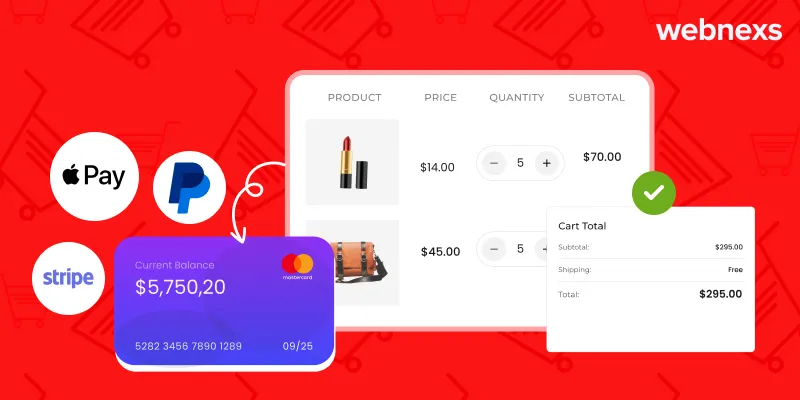
One of the main things that you need to check in ecommerce web development process is payment gateway integration.
Choose the best ecommerce website builders and get to know the number of payment gateways that they provide.
As you might already know, the purpose of the payment gateway is to process all sorts of payments from your customers.
It simplifies the transaction process by transferring the main information between payment portals and the front-end processor/bank.
Providing numerous payment gateways on the websites Paypal, Stripe, Google Pay, and Apple Pay will help your customers choose the payment gateway with which they are comfortable.
A customer will make regular purchases only if they are satisfied with the payment gateway.
Why is it important?
69% of customers abandon their shopping carts for reasons of either limited or inconvenient payment options.
Payment gateways are significant for safe and easy transactions between customers and ecommerce stores.
They allow customers to make payments in the way that they like best (through credit/debit cards, digital wallets, etc.) to ensure safety and ease in the process.
A varied and seamlessly integrated collection of payment gateways can greatly enhance customer trust and customer satisfaction, thereby increasing conversions and sales.
Also, multiple payment options help cater to international customers and different regions because people tend to have preferred payment methods based on geography, culture, and convenience.
ii) Shipping Integration
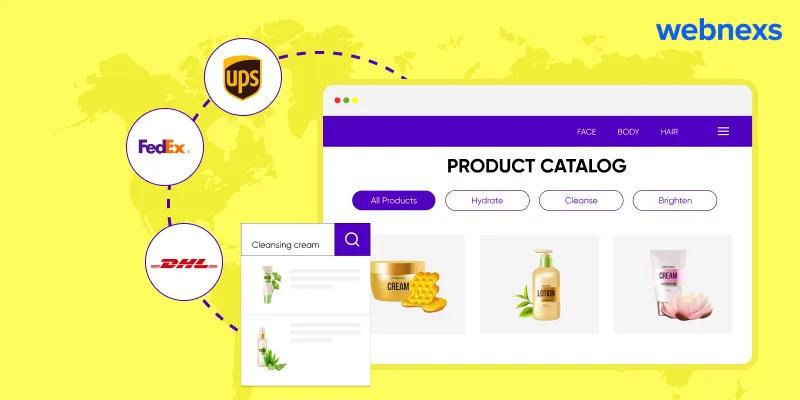
Delivering products to customers on time can be a challenging task. You can improve your delivery process by shipping purchases promptly. Integrating shipping into your operations streamlines the process and simplifies your work.
Poor shipping integration is responsible for over 70% of abandoned shopping carts. Therefore, ensuring efficient shipping is critical to customer satisfaction and retention.
Customers frequently look for many different items when shopping online, but one of the most important things that they look for is how a company handles the shipping.
Ecommerce shipping solutions are the prime aspects that consumers look for.
Consumers want shipping options that show their charges and taxes, thereby providing them with an understanding of the shipping rates and the various elements associated with purchasing items online.
Consumers also want to know that shipping rates are kept simple. They do not want to feel as though they are being overcharged when they can pay less elsewhere.
Some companies even consider free shipping as a promotional offer to ensure that consumers are satisfied with their shipping services.
It is important that companies clearly explain their policies concerning their shipping.
Putting everything on the product page ensures that consumers can process their orders efficiently, while also making sure that the applications are running as smoothly as possible.
When a customer enters your store to buy something, the first thing they will do after choosing the product is check the shipping integration.
Your shipping partner should provide you with features like order tracking, calculating the speed of the shipment, insurance options, live rate integration, real-time carrier rates, and more.
63% of ecommerce businesses with flexible shipping options experience higher conversion rates compared to those that do not offer similar options.
Important Things to Consider Before Choosing a Shipping Partner in Ecommerce Solution Development
Here are some things you need to consider when choosing a shipping partner for ecommerce website development process:
- Should have the ability to calculate real shipping prices based on real-time information provided by FedEx, DHL, and UPS online tools.
- Must have the freedom to set and create your shipping prices and methods.
- Should have access to print labels directly for your single or bulk orders from your online store for major carriers.
- Need to have the ability to make slight changes in carrier shipping prices, generally by a percentage.
- Should automatically send shipment tracking information to customers via email and notify them of any changes during the delivery process to reduce service calls.
- Customers should have the ability to check shipping options and rates to select any of the available options during checkout.
- You should be able to manually calculate shipping rates by determining the number of items ordered, total weight, and invoice amount based on the destination zip code or country.
- Should offer free shipping on certain orders over a specific limit or allow setting handling-free options for certain products.
- It should allow you to specify shipping options for your products.
Read More: Top Ecommerce Website features needed for your Ecommerce Store
6. Testing and Deployment
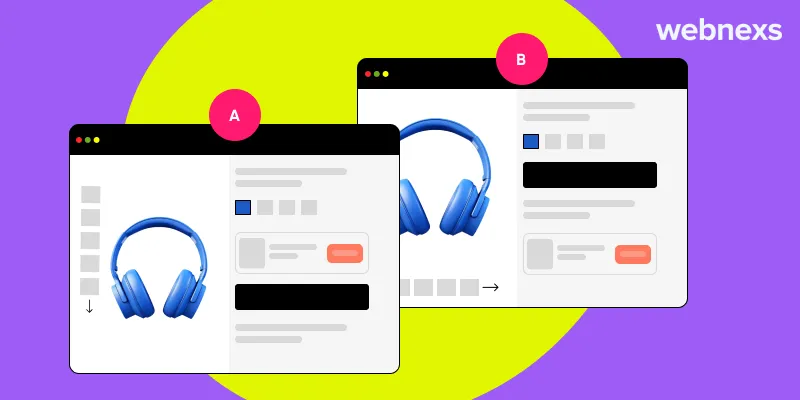
Testing and deployment phases are very important processes during ecommerce development.
Here is where you make sure that your online store works flawlessly across all devices and platforms.
Testing also includes identifying bugs, working on performance improvement, and ensuring a smooth experience for users during launch.
Testing in ecommerce development includes functional usability and cross-browser testing.
The site should perform well under heavy traffic with quick load times and stress-free checkout to maintain user satisfaction and conversion rates.
Once testing is completed, the deployment moves from the staging environment to a live server.
Payment gateways, security protocol setup, and additional integration setups should all be considered in testing to ensure they work properly during and after implementation so that the website runs smoothly for your users.
Why is it important?
Google says that 53% of mobile users abandon a site if it takes longer than 3 seconds to load.
Testing and deployment are vital in the ecommerce development process because they ensure it is suitable for real-world usage without site interruptions.
Poor testing may lead to bugs and performance issues, a high bounce rate, and ultimately lost sales.
The deployment phase is equally important as it certifies the website to go live.
It ensures a seamless flow of payment gateways, security protocols, and integrations, which is essential for conversion and business success.
Testing for cross-browser compatibility and mobile responsiveness is equally important given that users nowadays access ecommerce sites from a whole variety of devices.
A consistent experience across all platforms improves user retention and builds brand trust.
Read More: 6 Best Web Development Trends & Technologies
7. Launch and Post-Launch Activities
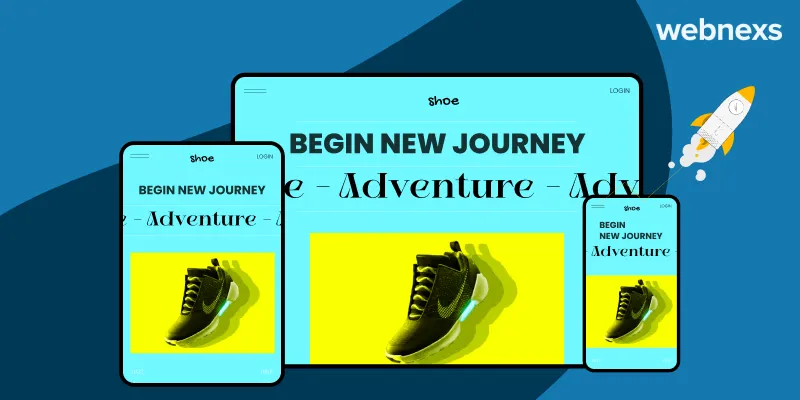
Going live with an online store requires carefully planned efforts to ensure the smooth functioning of the site across all user touchpoints.
This involves moving the site from a staging environment to a live server and ensuring that all integrations work, such as payment gateways and product catalogs.
At launch time, the final SEO optimizations are important for ensuring that search engines will index your ecommerce site.
This involves fine-tuning elements such as meta tags, URLs, and sitemaps to ensure search engines crawl them. This ensures visibility in competitive markets like the USA, UK, and Australia.
Post-launch, monitoring your site’s performance is important for tracking traffic, user behavior, and any potential technical issues.
Using analytics tools to track bounce rates, page load speeds, and conversion rates will enable you to optimize the performance of your site and keep user satisfaction levels high.
Launching an ecommerce store doesn’t just mean making the store live. Continuous growth must be pursued.
If a business ensures that the website is regularly upgraded with new technologies and remains user-friendly, success in ecommerce is inevitable.
Why is it important?
- Ensure that the site runs smoothly with no technical issues to provide an undisturbed user experience.
- After the launch, monitoring the site allows performance-related problems to be addressed, improving user experience and increasing conversion rates.
- Continuous updates and improvements keep the site competitive, user-friendly, and scalable for long-term growth.
- SEO optimization during launch ensures improved ranking on search engines, helping to draw attention away from competitors.
Did you know that Google uses more than 200 ranking factors in its algorithm?
Website performance, mobile-friendliness, content quality, and site security are just a few factors that play a critical role in determining your site’s ranking. Regular SEO optimization and site performance improvements can significantly impact your chances of ranking on that coveted first page!
Discover One of the Leading Experts in Ecommerce Website Development
Did you know that the secret to scaling your ecommerce business might just lie in the hands of an underrated expert?
Choosing the right ecommerce website development partner makes your success story much easier. A hidden gem in the ecommerce development industry is Webnexs.
A Trusted Leader in Ecommerce Development
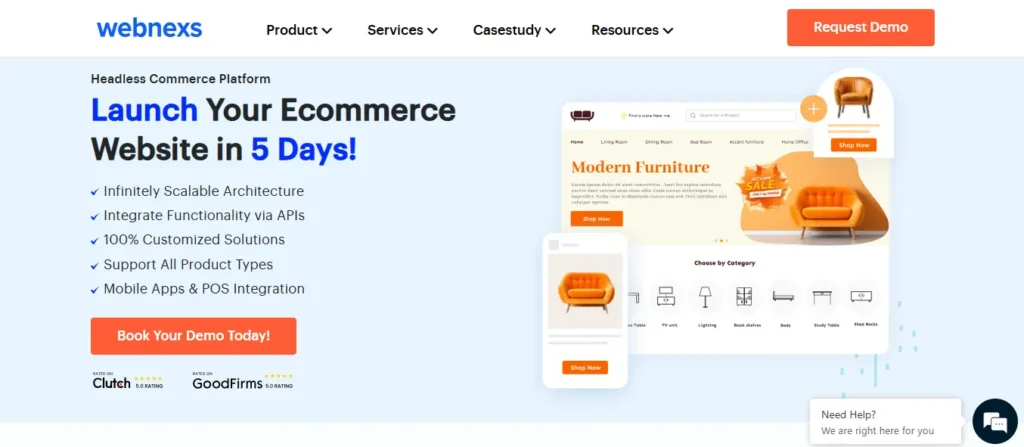
Webnexs has a team of experienced professionals with a proven track record of developing successful ecommerce websites. We specialize in all types of ecommerce website development, including enterprise-level platforms and headless ecommerce platforms. Additionally, we provide expert software services for specific integrations or customizations, such as multivendor, omnichannel, B2B ecommerce, and SMB.
Why Webnexs Stands Out in Ecommerce Web Design and Development
At Webnexs, every project is approached with a deep understanding of the client’s vision. Our expertise, combined with our commitment to achieving your brand’s goals, paves the way to ecommerce success. Our authority in the field comes from consistently delivering results that exceed expectations, making us a trusted partner for clients seeking long-term collaboration.
Ready to Transform Your Business with Ecommerce Development?
While others might chase after flashy trends, those who choose Webnexs often find themselves leading the market. Whether you’re launching your first store or scaling an established brand, Webnexs provides the tools, technology, and customized strategies to turn your vision into reality.
Get Started with Webnexs Ecommerce Development Process Now
In Summary
Building a successful ecommerce store is a stepwise process incorporating strategic planning, flawless design, precise development, and optimization.
While this guide took you through the seven most important steps in ecommerce development to launch your website, the journey has just begun. Remember, business is unique, so always modify these steps to fit your goals and audience.
These steps are not just a problem; frustration happens, and results take time. Get in touch with us to make all these steps seamless.
What’s next on your big ecommerce store goal list? Tell us! We’ll discuss how to achieve it!
